This is the third and final post in LiftMetrix’s social recap series of the 2016 Rio Olympics. Part One featured the Olympic winners on social and Part Two analyzed the social best practices that drove the winners’ social performance. Our recent Olympics recap webinar can be downloaded by clicking here or viewed by clicking here.
So why does social engagement actually matter? Social media has been around for about ten years now, and brands are anxious for their teams to show exactly how social is driving their business objectives. In this final post, we will dive into how the Olympics sponsors’ social performances can be tied to business objectives.
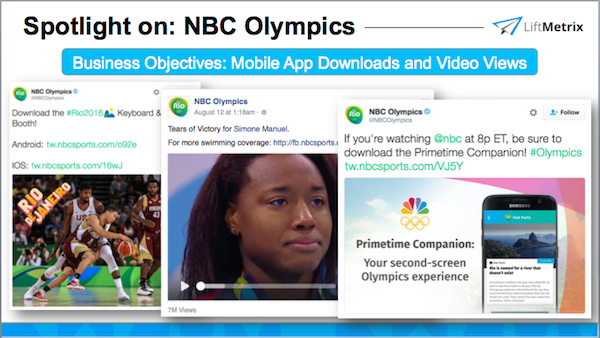
NBC Olympics’ social content drove business objectives such as Mobile App Downloads and Video Views. Several of NBC Olympics’ top performing social posts had clips of Olympians’ performances but then also included links to their site where social users could view the full coverage. Social audiences were also encouraged to download NBC Olympics’ “Primetime Companion” to stay up-to-date with coverage, as well as a Keyboard and Photo Booth app to further captivate users.
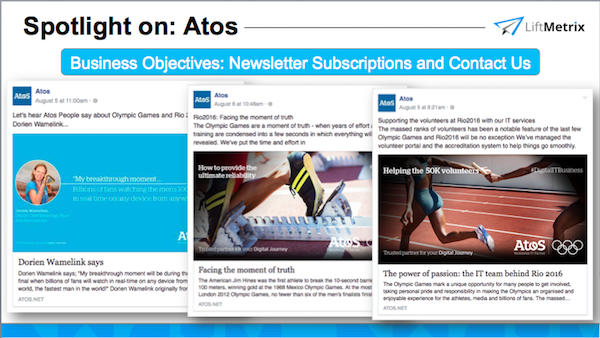
Atos’ content surrounding the Olympics helped engaged their social audience on social but it also then drove this audience to the Atos site where they could track how many people signed up or contacted them as a result of their social posts. The social posts enabled Atos’ social audience to learn more about various athletes and take a look behind-the-scenes, and the links in the posts drove to sitepages that were optimized with forms for audiences to sign up for the Atos newsletter and/or contact them to learn more.
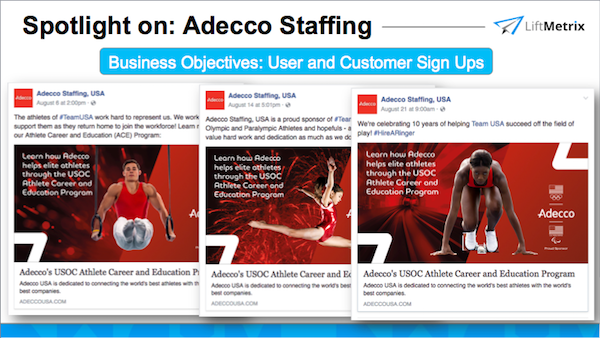 Adecco Staffing featured Olympic and Paralympic Athletes in its social content to promote its USOC Athlete Career and Education Program. The posts drove to a customized page geared towards both brands and for job seekers so they could learn more about the program and sign up. For campaign success metrics, Adecco Staffing can evaluate which channels and posts drove user and customer sign up by mapping social data to website data.
Adecco Staffing featured Olympic and Paralympic Athletes in its social content to promote its USOC Athlete Career and Education Program. The posts drove to a customized page geared towards both brands and for job seekers so they could learn more about the program and sign up. For campaign success metrics, Adecco Staffing can evaluate which channels and posts drove user and customer sign up by mapping social data to website data.
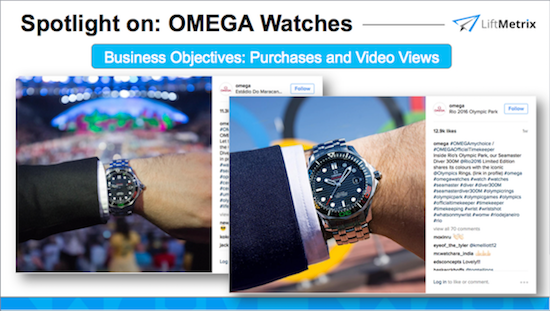
Omega Watches featured this wrist sporting its watches around Rio and during various Olympic sporting events. These posts drove to an optimized page where user could view and purchase Omega’s watch offerings, as well as view a teaser video of the brand’s presence in Rio.
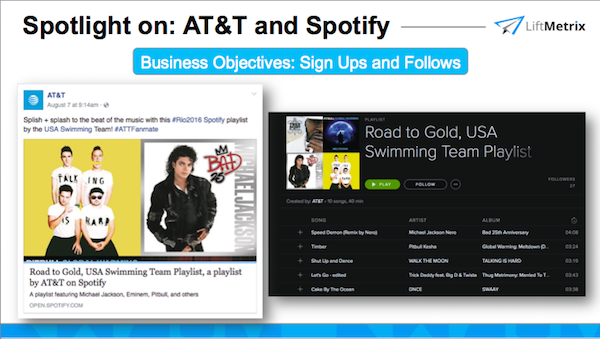
AT&T and Spotify asked various Team USA sports which songs they listen to on Spotify, created lists from these recommendations on Spotify, and then AT&T promoted these playlists to its social audience. Using this strategy, AT&T and Spotify could track clicks, playlist follows, song streaming, and signups to the Spotify platform.
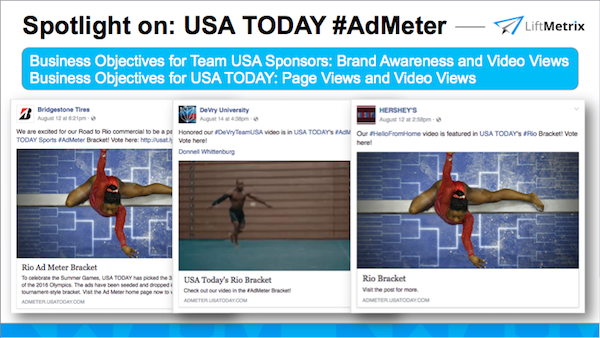 USA TODAY launched its #AdMeter bracket which enabled its audience to vote on the videos, commercials, and promos that all of the Team USA sponsors put out surrounding the Olympics. The sponsors could use this to drive brand awareness and video views and USA TODAY could use this strategy for more video and page views. By utilizing all of these sponsors’ videos, USA TODAY was able to have all of these brands’ social accounts drive to its site and further increase the publication’s video and page views.
USA TODAY launched its #AdMeter bracket which enabled its audience to vote on the videos, commercials, and promos that all of the Team USA sponsors put out surrounding the Olympics. The sponsors could use this to drive brand awareness and video views and USA TODAY could use this strategy for more video and page views. By utilizing all of these sponsors’ videos, USA TODAY was able to have all of these brands’ social accounts drive to its site and further increase the publication’s video and page views.
So how can you apply this approach to your social efforts?
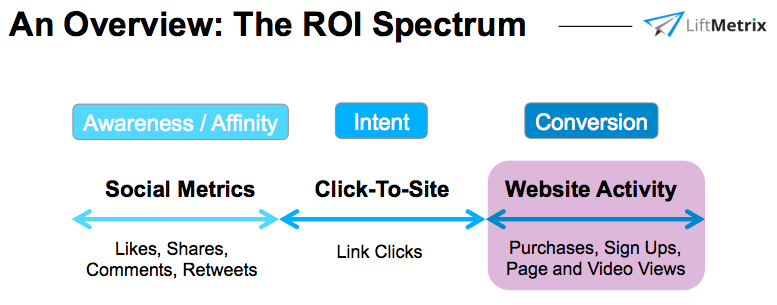
This is the spectrum of data that social media yields as a result of posting and buying ads. On the far left side are social media metrics, such as likes, shares, comments and impressions. These metrics help with brand awareness and affinity but they stop short of driving brands’ real business objectives. Clicks to your site reside in the middle of the spectrum; this is a critical juncture because it converts an ‘awareness’ or ‘affinity’ metric to a potential customer who has expressed intent. Finally, the far right of the spectrum is where brands can convert a social follower to a customer on the brand’s website. A conversion can manifest itself in many forms, such as purchases, sign-ups, etc.
Without tying social media to your website, brands are missing out on the most important half of their data. Here is how you can calculate the business impact of your social media campaigns:
- Select Your Social Goals
- Apply Value to Key Business Objectives
- Track Conversions and Discover Top ROI Content
You can view the 5 Steps to Social ROI Measurement by clicking here.
In case you missed the first two parts of this series, you can read them by clicking these links to Part One and Part Two. All of this was covered in our recent Olympic Gold Medalists on Social webinar, which can be downloaded by clicking here or viewed by clicking here.

